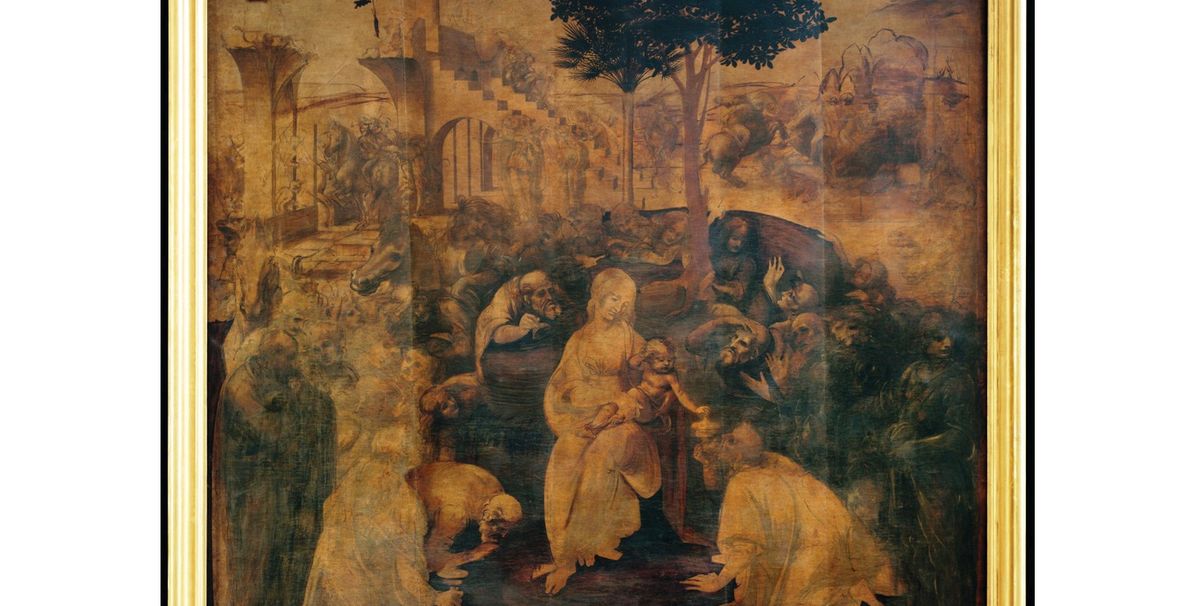A newly restored Leonardo da Vinci panel painting, works rescued from central Italy’s earthquake zone and Renaissance-inspired drawings by the Russian film director Sergei Eisenstein are on the eclectic list of exhibitions coming to Florence’s Gallerie degli Uffizi this year. The prestigious museum, which is best known for its crowd-pulling collection of masterpieces by the likes of Botticelli, Raphael and Titian, is “beefing up” its programme with more temporary shows during the low tourist season, says its director Eike Schmidt in a statement.
After six years under restoration at the Opificio delle Pietre Dure conservation centre, Leonardo’s Adoration of the Magi is returning to the Uffizi at the end of March in Leonardo da Vinci’s Magic Cosmos: the Adoration of the Magi Restored (28 March-24 September). At more than two metres square, the early panel painting is the largest surviving example of this type of work by the Tuscan master. Commissioned as an altarpiece by the monks of the church of San Donato a Scopeto in 1481, the work was left unfinished when Leonardo moved to the court of Milan the following year. It passed into the hands of the ruling Medici family, who established their then-private museum at the Uffizi a century later. The work will now go back on show to the public alongside the Adoration of the Magi (1496) by Filippino Lippi—the painting the monks eventually commissioned to replace Leonardo’s.
Salvaged art of a different kind is the subject of an exhibition in support of recovery efforts in Italy’s Marche region, which was hit by severe earthquakes last August and October. In collaboration with the local authorities, the Uffizi will display works from the Middle Ages to the 18th century that have been rescued from the damaged churches, monuments and museums of the Ascoli Piceno, Fermo and Macerata provinces (We Must Make Haste! Marche 2016-17: Treasures Rescued and Treasures Still to Rescue, 28 March-30 July). The proceeds from ticket sales will help fund the reconstruction of cultural heritage in the earthquake zone—which could cost the country as much as €3bn, according to a recent report by Italy’s Civil Protection Agency.
Schmidt says the museum will end the year with a trio of shows focusing on “three true revolutionaries” with links to the Uffizi collection: the religious reformer Martin Luther, who was immortalised by Lucas Cranach the Elder and his workshop; Leopoldo de’ Medici, the cardinal and avid collector whose art the Uffizi still maintains; and, most surprisingly, Eisenstein. Co-organised with the Pushkin State Museum of Fine Arts in Moscow and the Cineteca Comunale di Bologna, Eisenstein: the Image Revolution (7 November-7 January 2018) traces the pioneering Soviet film-maker’s “narrative revolution” back to his interest in Italian Renaissance art. “It is important to us not to have random contemporary shows but [to open] a new perspective on the historical works that people see in the Uffizi,” Schmidt tells The Art Newspaper.


